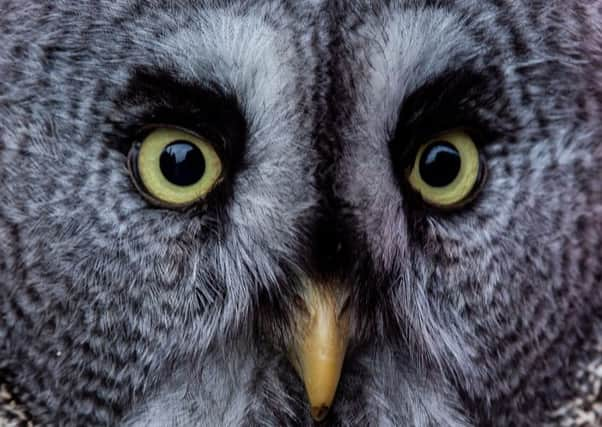Why Great Grey Owl has '˜satellite dish of feathers'


It is easy to see what they mean. The grayscale plumage forms a cyclical pattern, framing the owl’s bright yellow eyes and slightly duller beak.
But, whilst the facial disk is both striking and mesmerising in appearance, it also serves an important role in day-to-day survival, helping these birds to detect their next meal.
Advertisement
Hide AdAdvertisement
Hide Ad“The great grey owl has very sensitive hearing, and is capable of hearing a small rodent’s heartbeat several feet under the snow,” the Woburn Safari Park website states. The Bedfordshire wildlife park has one female Great Grey Owl.
“The feathers of an owl’s face help with this hearing, by forming a facial disk, a disk of feathers used like a satellite dish to help point any sound towards these ears,” the site continues. “In the Great Grey Owl this facial disk is more prominent than some other species, due to it relying on its hearing so heavily to locate prey.”
Food plays a key part in the breeding process. A courtship between owls will involve the male bringing gifts of food to the female - and the amount of food available to the owls may affect whether or not they breed and even the number of eggs they lay.
Whilst they do not tend to build their own nests, instead opting for those created by other birds or taking to makeshift sites like broken tree stumps or clumps of mistletoe, their next meal guides their decision of where to settle and they may nest for several years in the same place if food is plentiful.
Advertisement
Hide AdAdvertisement
Hide AdOne of the largest owl species in the world, the birds typically feed on small rodents which can be found in the forested Northern Hemisphere habitats that they call home, including in the US and Scandinavia.
The animals can also be seen in several UK wildlife parks and Bird of Prey centres, and those with an eagle-eye may have also spotted the species on the big screen - it was a Great Grey Owl that played one of the Weasley family owls, Errol, in the Harry Potter series.
Technical details: Nikon D5, Lens Nikon 70-200mm, Shutter Speed 1/100sec, Aperture f/5.6, ISO 400.